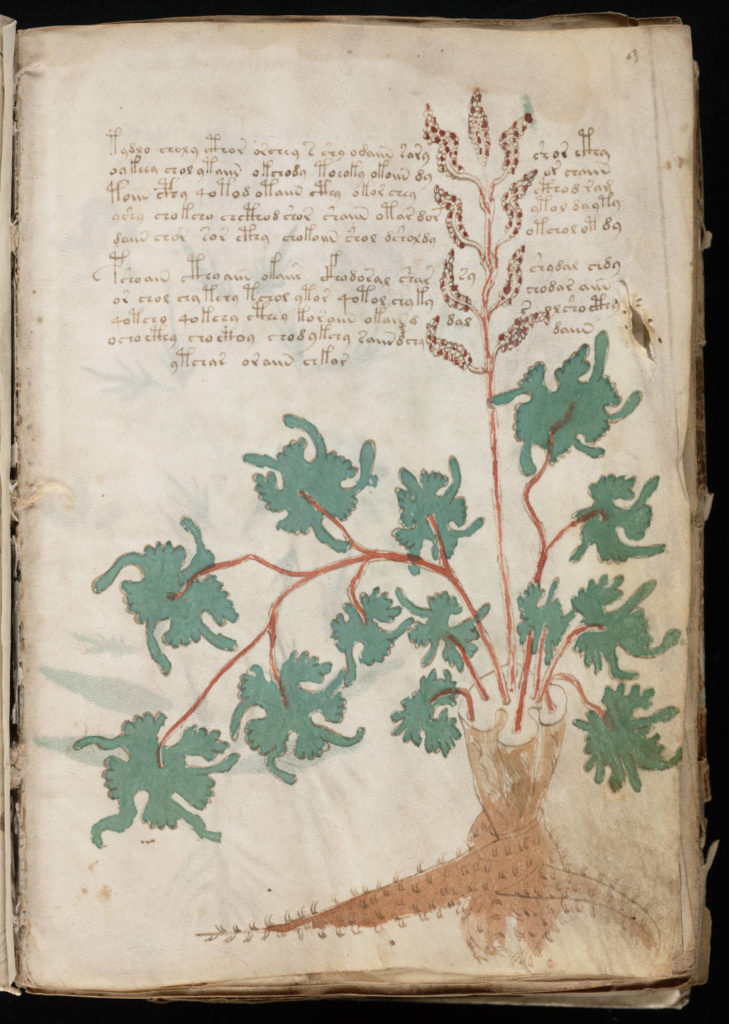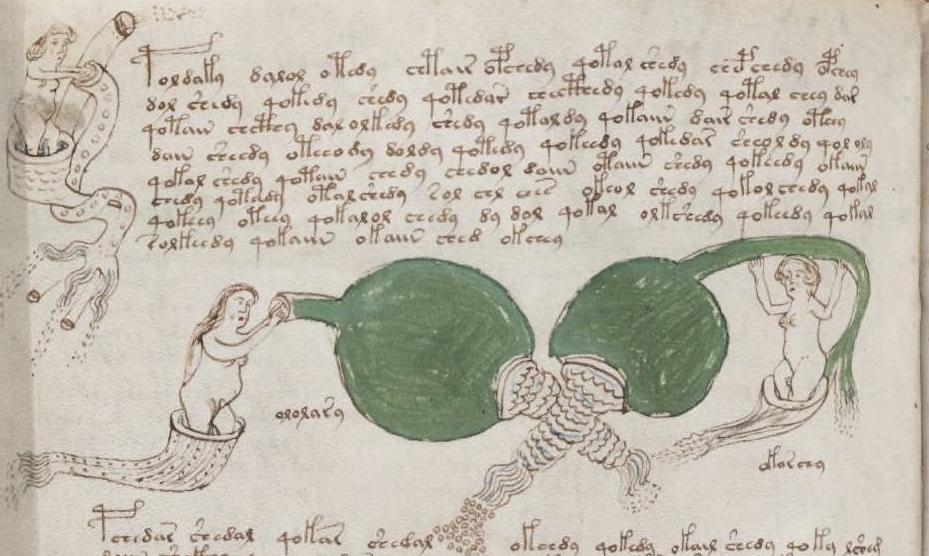Heard about the mysterious Voynich Manuscript? No?
Then check out the Wikipedia entry concerning it:
https://en.m.wikipedia.org/wiki/Voynich_manuscript
In essence, the Voynich Manuscript is a book consisting of strange writings and illustrations purchased by Wilfred Voynich in 1912. Since that time, scholars as well as the curious have tried -and failed- to decipher the writings within the manuscript.
In the past few days, however, Gerard Cheshire, a University of Bristol academic, announced he has deciphered the famous manuscript. If you’re curious, you can read the article explaining how he did it here…
https://www.tandfonline.com/doi/full/10.1080/02639904.2019.1599566
Sounds good, no?
Finally, finally, we get to find out what mysterious things were written in this very mysterious book, right?
Well, hold your horses because Jennifer Aullettee points out the fact that many people have claimed over the years to have deciphered the Voynich Manuscript and, so far, none have proven correct. She also offers in her article reasons to doubt Mr. Cheshire’s claims, as well:
I have to say, when I heard of Mr. Cheshire’s claims, I was excited. Hell, I’m fascinated by things like this, essentially unsolved mysteries from the past.
However, it seems to me Ms. Aullettee has effectively thrown cold water on Mr. Cheshire’s claims and… well… until I read otherwise I’m thinking this might be one of a long line of claims that don’t quite hold.
Funny thing is, I suspect when/if the manuscript is deciphered the end result will be a lot of stuff that, to modern readers, will appear to be nothing more than old nonsensical ideas/notions/stories. I strongly suspect we’re not about to find a lost classic of literature.
My basis for this is in some of the illustrations presented in the manuscript, such as…

Or…

Or…

There are many other pages from the book one can find online. Many deal with flora, like the second piece presented above, while others show oddities like pictures 1 and 3. What has so many curious is the writing alongside these pieces. This is, obviously, what so many are trying to decipher.
Until we have final proof -and assuming this latest decryption turns out to be not quite what it is being billed as- I’ll keep hoping for a day when the manuscript is indeed completely deciphered, though I feel whatever writings there are will prove to be, perhaps, quite nonsensical.
We’ll see!
5/17/19 POSTSCRIPT:
We’ll see indeed!
Not even 24 hours later I find this article by Ryan F. Manbelbaum and presented on Gizmodo.com which states:
Sorry, it looks like a Researcher didn’t just crack the Voynich Manuscript after all
The upshot is that the university in which the above mentioned individual who claimed to have cracked the Manuscript… well… I’ll let the University Speak for itself (you can read their full statement here):
Following media coverage, concerns have been raised about the validity of this research from academics in the fields of linguistics and medieval studies. We take such concerns very seriously and have therefore removed the story regarding this research from our website to seek further validation and allow further discussions both internally and with the journal concerned.
Yeah, sounds like they feel just maybe the whole “I deciphered the thing” statement previously released might have been… well… premature, to say the least.



